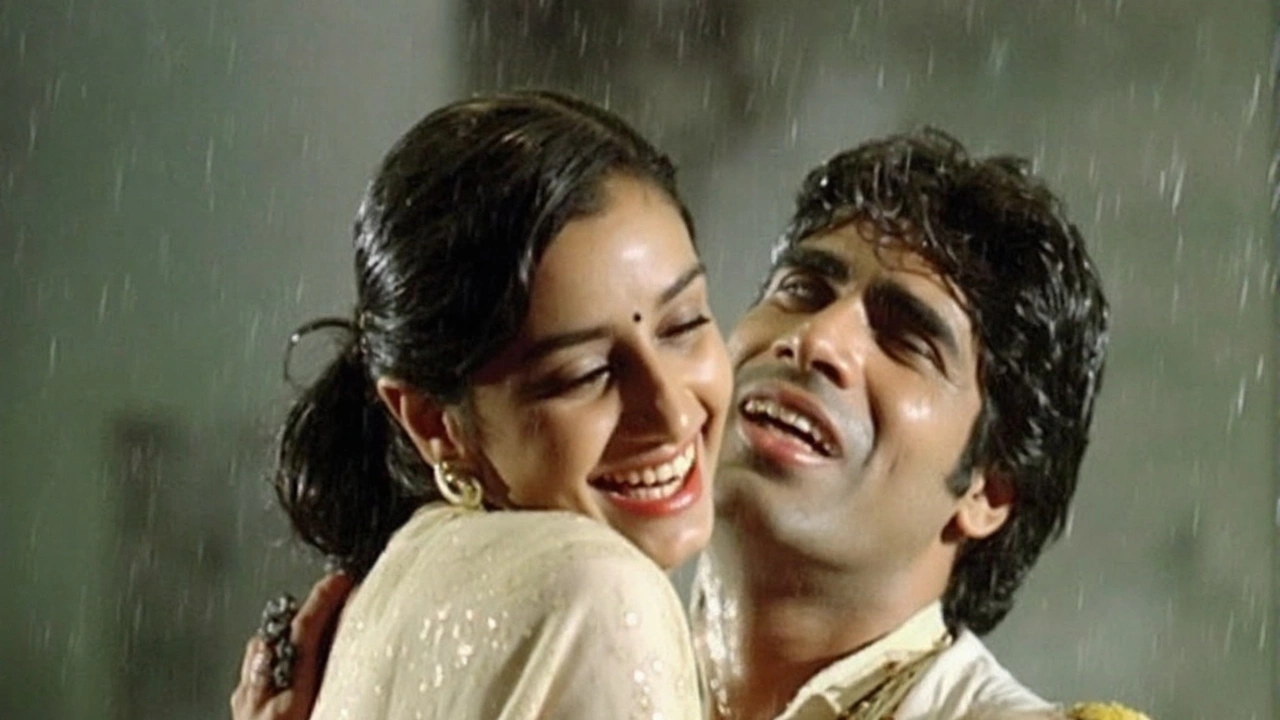
Bollywood’s Rain Songs: Where Music Turns Monsoon into Magic
Every time the clouds burst open across India, something strange happens: dozens of Bollywood melodies start playing in our heads. It’s almost automatic. The sound of raindrops takes on a new meaning when you’ve grown up with Bollywood rain songs—they don’t just set the mood, they define it. The monsoon isn’t just a season here; it’s woven into stories of passion, longing, heartbreak, and renewal, all played out through unforgettable tunes.
Let’s face it: no other film industry has made rain such a cinematic superstar. Classic beauties like Rimjhim Gire Sawan from Priyatama (1977) are more than just background music. Composed by Rajesh Roshan with Lata’s velvet vocals, this track is the friend you need on a wistful evening, the kind that makes you want to stand by the window and watch the world get washed clean. And who can forget Pyaar Hua Ikraar Hua from Raj Kapoor’s Shree 420 (1955)? That black umbrella wasn’t just a prop; it became a symbol of innocent, drenched love, and every monsoon walk since has tried to capture that same magic.
For those squiggling between friendship and flirtation, there’s Bheegi Bheegi Raaton Mein (Ajnabee, 1974), where Kishore Kumar and Lata Mangeshkar traded playful notes while Rajesh Khanna and Zeenat Aman made rain look irresistible. The way their laughter mixed with the rain set a standard for on-screen chemistry that later pairs still try to match.
How Modern Rain Anthems Changed the Game
Jump forward, and you’ll see A.R. Rahman changing the rules with Ghanan Ghanan from Lagaan (2001). This wasn’t just about lovers’ longing; it was hope for an entire village, a prayer for rain to save the crops and the community. Suddenly, monsoon songs weren’t just personal—they were communal celebrations. And Rahman didn’t stop there. Tere Bina from Guru (2007) had Aishwarya Rai twirling in the rain, making everyone want to fall in love (or at least find the nearest puddle).
The 2000s also gave us songs like Tum Se Hi (Jab We Met, 2007) and Bhaage Re Mann (Rockstar, 2011), where rain turned into a metaphor for the messy, thrilling, unpredictable bits of falling head over heels. You could see Kareena Kapoor dancing with abandon, or imagine the wild heartbeats behind the lyrics Sunidhi Chauhan poured her voice into.
Of course, Bollywood never shies away from turning heat up with a good rain dance. Tip Tip Barsa Pani (Mohra, 1994) is unforgettable for a reason—Raveena Tandon, clad in yellow, made even the rain blush. It’s rain at its most playful and daring, and to this day, it’s the go-to track for a sultry monsoon party.
But not all monsoon tracks are about heat and fun. Some hit a softer, deeper chord. Phir Se Aaiyo Badra Bidesi (Namkeen, 1982) gives rain a flavor of longing, with R.D. Burman crafting a melody that lingers like a memory you can’t shake off. Then there’s Yeh Sazish Hai Boondon Ki (Hum Tum, 2005)—a song built for stolen moments and hesitant first steps in love.
And when heartbreak comes calling, Bollywood uses rain to soften the blow. Atif Aslam’s Woh Lamhe Woh Baatein (Zeher, 2005) is that late-night monsoon confession nobody admits to making. Or look at Aye Udi Udi Udi (Saathiya, 2002): it's spontaneous, raw, and reminds us that love, like the weather, can't be controlled.
Bollywood rain songs aren’t just tunes—they’re emotional signposts. They crop up on every monsoon playlist, in every neighborhood chai stall, and at every heartbroken or lovestruck moment. Even if you’re not a romantic, it’s tough not to hum along when those first drops hit the earth. That’s Bollywood’s monsoon magic for you—timeless, catchy, and always a little bit nostalgic.